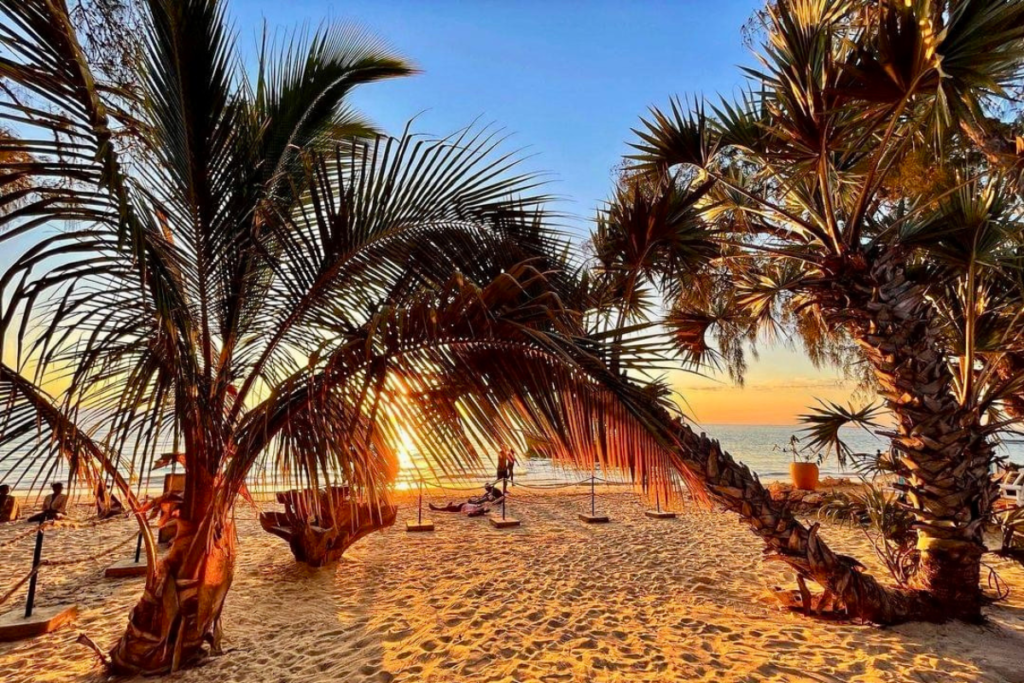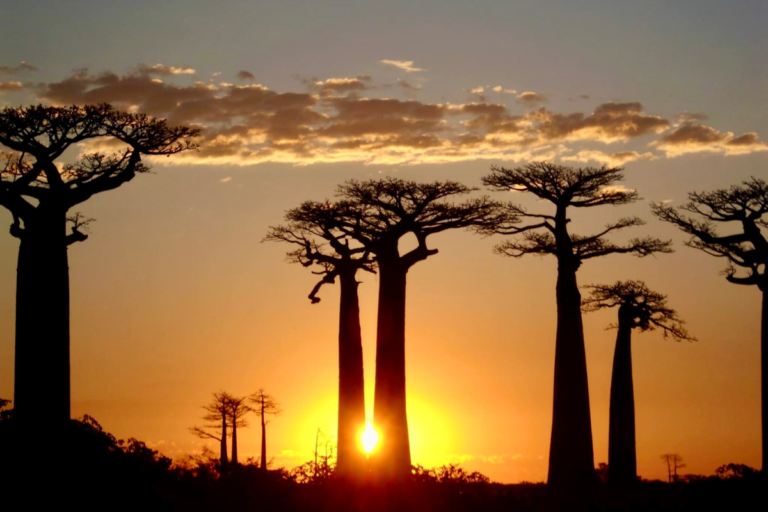Snuggled in the Indian Ocean, Madagascar beckons intrepid travelers with its unparalleled biodiversity and rich cultural tapestry. This unique island, often referred to as the “eighth continent,” boasts distinct regions that unveil a captivating blend of history, nature, and adventure.
Madagascar History
Madagascar’s history is a compelling narrative woven through the threads of ancient civilizations, maritime exploration, and cultural diversity. In the pre-colonial era, the island’s first inhabitants arrived from Southeast Asia, navigating the Indian Ocean in outrigger canoes. These Austronesian settlers, known as the Malagasy people, brought with them unique linguistic and cultural traditions, shaping the foundation of Madagascar’s identity. Over centuries, distinct tribal kingdoms emerged, such as the Merina in the central highlands, the Betsileo in the south, and the Sakalava in the west, each contributing to the island’s rich tapestry.
The island’s historical trajectory took a dramatic turn with the arrival of European explorers. Portuguese seafarer Diogo Dias is credited with being the first European to set foot on Madagascar in 1500. However, it was the French who established a lasting colonial presence in the late 19th century. Madagascar became a French protectorate in 1885 and later a colony in 1897. The colonial period left an indelible mark on the island’s culture and administration. Despite gaining independence in 1960, Madagascar’s history is a testament to its resilience, as the Malagasy people continue to preserve their unique heritage amidst the challenges of a changing world.
Regions detailed
Antananarivo and the Highlands Start your journey in the capital, Antananarivo, a city steeped in Malagasy history. Explore the royal palaces and vibrant markets, gaining insights into the island’s past. Venture into the scenic Highlands, where terraced rice fields and traditional villages offer a glimpse into local life.
Eastern Rainforests Discover the lush rainforests of the East, home to the famous Andasibe-Mantadia National Park. Here, encounter lemurs, chameleons, and a myriad of endemic flora. The mystical sounds of indri lemurs echo through the dense foliage, creating an immersive experience.
Baobab Alley and the West Head to the iconic Avenue of the Baobabs in the West, a surreal landscape dotted with ancient, towering baobab trees. Sunset here is a spectacle, casting an ethereal glow on these giants. Explore the Tsingy de Bemaraha National Park, a UNESCO World Heritage site known for its otherworldly limestone formations.
Southern Adventure The southern region offers diverse landscapes, from the unique Spiny Forest to the beautiful beaches of Ifaty. Witness the ‘Avenue of the Baobabs of the South’ and immerse yourself in the vibrant Vezo culture. Don’t miss the opportunity to relax on the pristine beaches and explore the underwater wonders of the Indian Ocean.
Nosy Be and Northern Islands For a tropical escape, head to Nosy Be and the surrounding islands in the North. With turquoise waters and coral reefs, this region is a haven for water enthusiasts. Engage in snorkeling, diving, and discover the local vanilla plantations.
What Not to Miss When in Madagascar
A must-see is the mystical Tsingy de Bemaraha, a labyrinth of razor-sharp limestone formations. Witness the ‘Dance of the Lemurs’ in Andasibe-Mantadia National Park for a magical wildlife encounter.
Curiosity
Madagascar is home to the world’s smallest chameleon, the Brookesia micra, with an average length of just 29mm!
Best Time to Visit
May to October is ideal, offering pleasant weather and optimal conditions for wildlife viewing.
How to Get to Madagascar
To reach Madagascar, international travelers typically fly into Ivato International Airport in Antananarivo. Several airlines offer flights connecting to Ivato from major cities worldwide. Popular carriers include Air Madagascar, Air France, Turkish Airlines, and Ethiopian Airlines. While direct flights are available, some itineraries may involve layovers in nearby African or European cities.
For a more adventurous approach, consider the option of ferry services from neighboring islands like Reunion or Mauritius. However, keep in mind that ferry schedules can be irregular, and the journey may take several days.
What to Do
- Wildlife Tours: Engage in guided wildlife tours across national parks like Andasibe-Mantadia, Ranomafana, and Isalo. Spot lemurs, chameleons, and a plethora of unique flora and fauna. Experienced guides provide valuable insights into Madagascar’s incredible biodiversity.
- Cultural Exploration: Immerse yourself in Malagasy culture by exploring local markets, attending traditional performances, and visiting historical sites like the Rova of Antananarivo. Participate in community-based tourism initiatives to interact with local communities and learn about their customs.
- Adventure Activities: For the adventurous souls, indulge in activities like trekking in the Tsingy de Bemaraha National Park, diving and snorkeling in Nosy Be, or exploring the rugged landscapes of the Avenue of the Baobabs.
- Beach Relaxation: Unwind on the pristine beaches of Ifaty or Anakao in the south. These idyllic coastal areas offer a perfect retreat, with opportunities for water activities and the chance to witness vibrant sunsets over the Indian Ocean.

Where to Stay
- Antananarivo:
- Luxury Option: Stay at the Palissandre Hotel & Spa, offering elegant rooms and a central location.
- Mid-Range Choice: Hotel Colbert Spa & Casino provides comfortable accommodation with modern amenities.
- Budget-Friendly: Tana-Jacaranda Guesthouse offers a cozy atmosphere and personalized service.
- Morondava (Avenue of the Baobabs):
- Luxury Option: Palissandre Cote Ouest Resort & Spa provides a beachfront retreat with panoramic views.
- Mid-Range Choice: Renala Sable d’Or is a charming hotel with bungalows set amidst nature.
- Budget-Friendly: Chez Maggie offers affordable rooms and a relaxed atmosphere.
- Nosy Be:
- Luxury Option: Anjiamarango Beach Resort combines luxury with a beachfront location.
- Mid-Range Choice: L’Heure Bleue offers comfortable accommodation and a tranquil setting.
- Budget-Friendly: Les Boucaniers provides budget-friendly rooms near the beach.
Where to Eat
- Antananarivo:
- La Varangue offers a fine dining experience with a mix of Malagasy and French cuisine.
- Le Glacier is a popular spot for delicious pastries and desserts.
- Morondava:
- Chez Maggie serves a variety of Malagasy and international dishes in a relaxed setting.
- La Palmeraie offers seafood specialties with a view of the ocean.
- Nosy Be:
- Le Roof provides a beachfront dining experience with a menu featuring fresh seafood.
- Le Grand Bleu is known for its diverse menu and romantic atmosphere.
Madagascar, with its kaleidoscope of landscapes and unique biodiversity, is a destination that transcends the ordinary. As you traverse the island’s regions, you’ll not only witness nature’s marvels but also immerse yourself in the captivating stories of the Malagasy people. This is a voyage that promises not just a vacation but an odyssey of discovery, leaving indelible memories etched in the heart of every traveler fortunate enough to explore this enchanting island. Madagascar awaits, where every step is a dance with nature’s wonders.
You may also like,
- Skiing Destinations, Discover the Top Ones Across the USA
- Easter Island and its Mystique
- Five Stunning Beaches in Brazil: A Paradise Awaits
- Aare River: A Serene Journey Through Bern, Switzerland
- Exploring the Charms of Oahu, Hawaii

